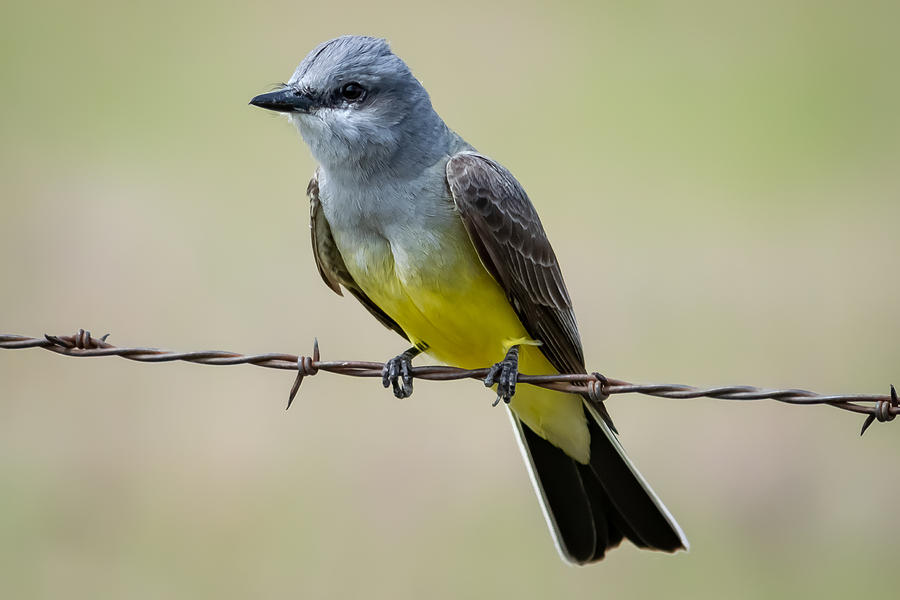I am dissatisfied with how my life is turning out regarding my involvement in the nature of this planet. I do little more outdoors than to walk for my health most everyday—mostly in a local cemetery in Laurel, MT, which is quiet and beautiful. And so I have decided to study the flora and fauna I see there. I decided to create this page in order to store what I have learned about what I have identified. This is a work in progress. I do not have a very good camera, so most of these photos are borrowed, and are linked back to their origins in the captions.
BIRDS
American Robin
The Robins seem to be about the first of the migratory birds to show up in the Spring.
/am-robin-594ec95a3df78cae81dca55a.jpg)
Here’s a nest I found on the morning after a long rain. It was under a Cedar Tree. It’s of the “cup nest” variety, and is dobbed inside with mud. I don’t know what breed made the nest. Most of the robin nests I see online are not dobbed with mud like this one is. But here’s an account of a robin dobbing her nest with mud—and in a low evergreen tree. So I suspect this is a robin’s nest.

Black-Billed Magpie

Cassin’s Finch

Common Grackle

Great Crested Flycatcher / Western Kingbird
I’m not sure which of these birds I’m seeing. It’s most likely the second, as it’s commonly thought to cover all of Montana, where the first is generally believed not to come this far West. I notice the different in the tail shape, so I’ll be on the lookout for that.
House Finch
Notice the similarity to the Cassin’s Finch above. Be careful to note the brown cap on the House Finch. And the red on the House Finch is not as brilliant as on the Cassin’s Finch.
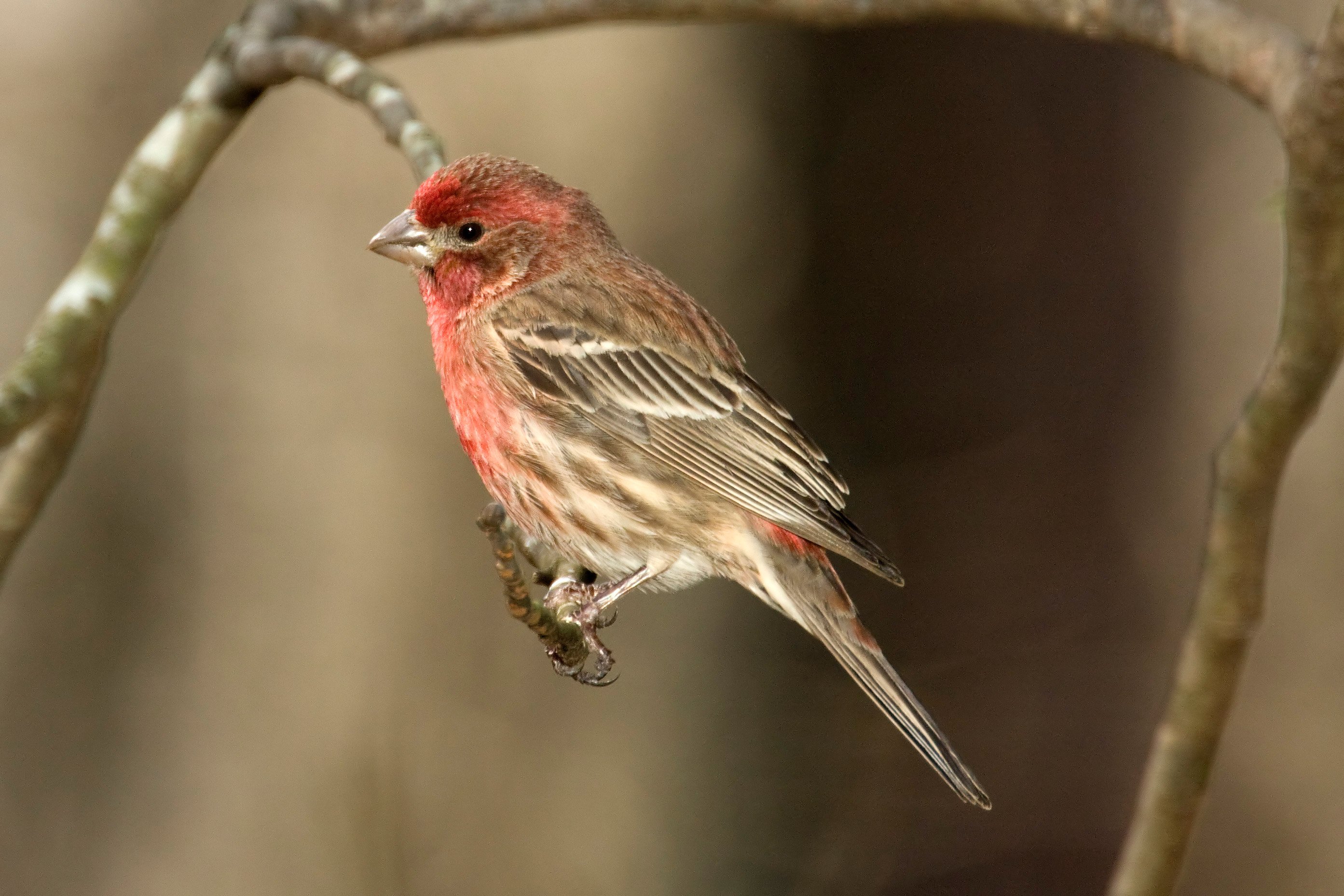
Killdeer


Lark Sparrow
It took me over a month to identify the Lark Sparrow. If it’s looking right at you, you’ll see five whitish stripes on its head. One down the middle, one over each eye, and one on each side of the throat. This bird also eats seeds, and I’ve seen it at my feeders at home, but it also acts like one of the flycatcher family. It perches on the barbed-wire fences–and especially on the posts–and it flies out to catch a flying insect, and then returns. (This same behavior also occurs in the Western Kingbird—and both often hunt in pairs.)


Mallard
There was a pair or two of mallards that would lounge on the lawn (normally in the shade) during the mid- to late spring. It seems they left sometime in June.
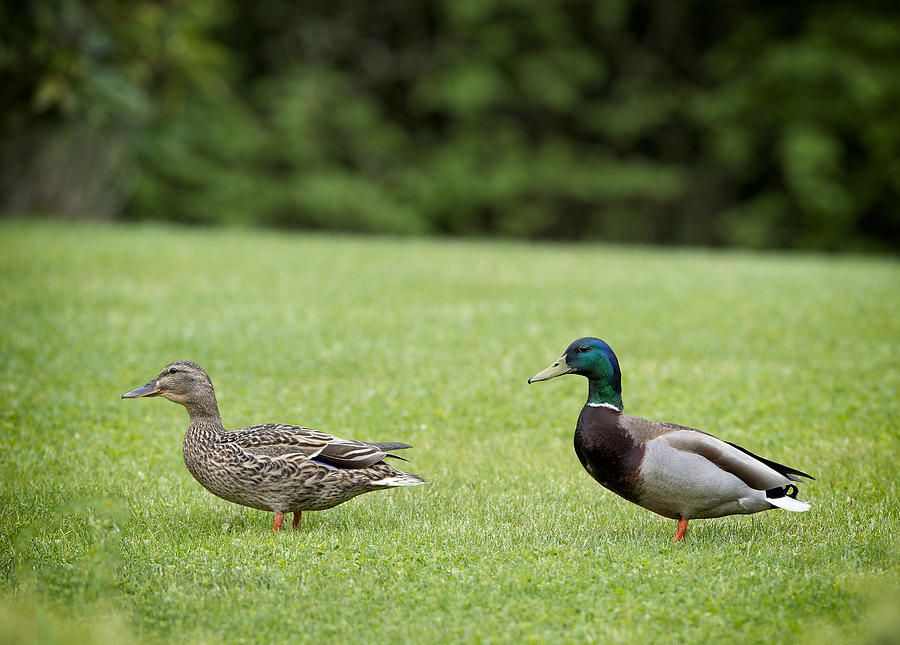
Mountain Chickadee
I’ll have to get a closer look, but I’m guessing the Chickadees I’m seeing are Mountain Chickadees. They could also be Black-Capped Chickadees. They don’t seem to show up until late Spring.
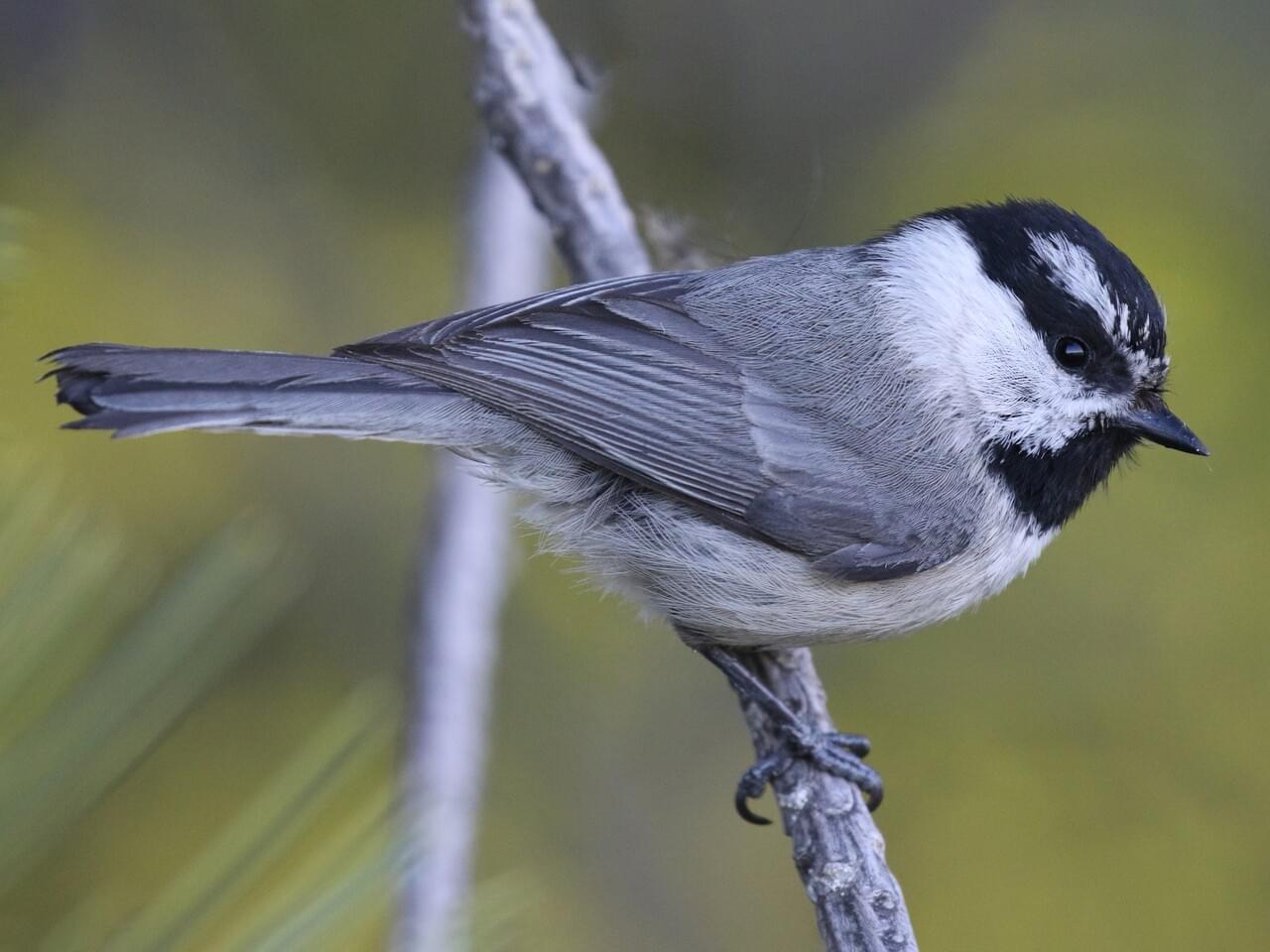
Mourning Dove
The mourning doves are here year-round.
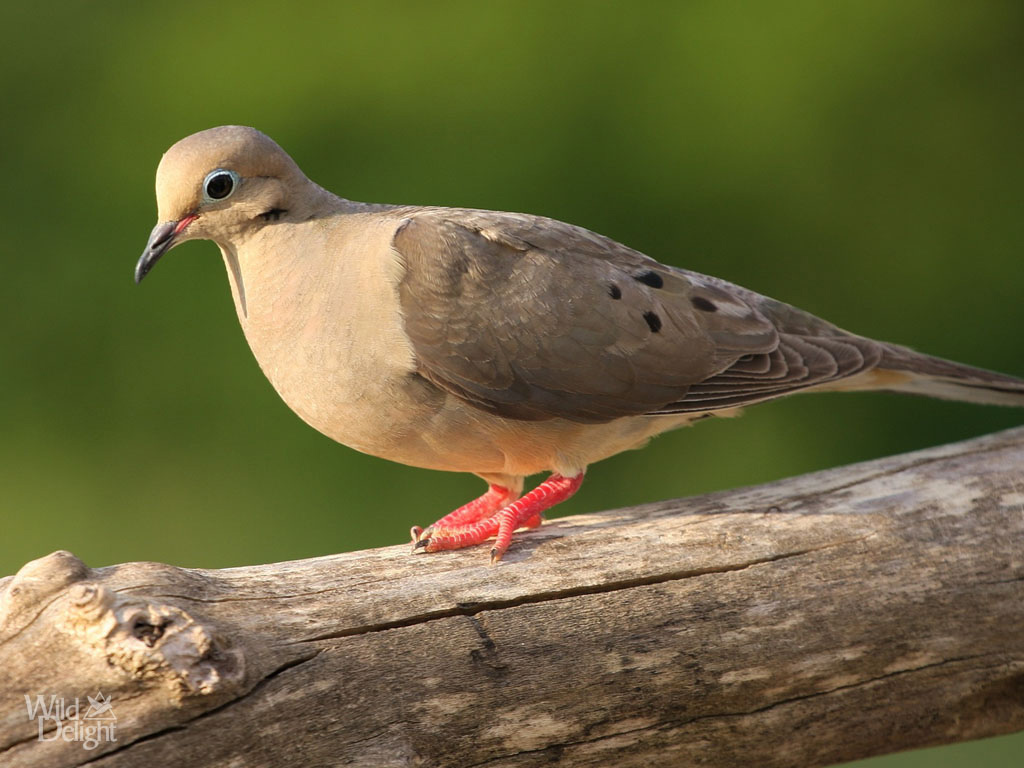
Unidentified
I spotted a bird at a distance—too far to see well with my monocular. I had thought it was a robin, but it had a mottled breast. It looked something like this:
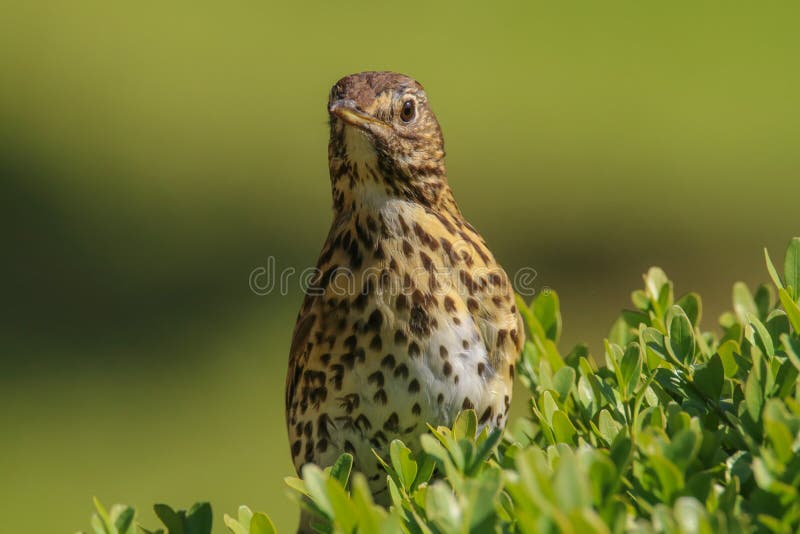
MAMMALS
American Red Squirrel
Be sure to see my post (with video)
Cottontail Rabbit

I’ve been confused about the rabbits. There are two tool storage sheds at the cemetery, and last year, I would see one or two rabbits lounging on the lawn frequently outside of each shed. It seems they dwindled in number as the year went by, and my guess was that predators were getting them. This year, I saw no rabbits at all until early June, and then it was just one rabbit. I saw it lounging for two days in a row, and have not seen it since.
Mule Deer
I see Mule Deer from time to time, and deer signs constantly, year-round.
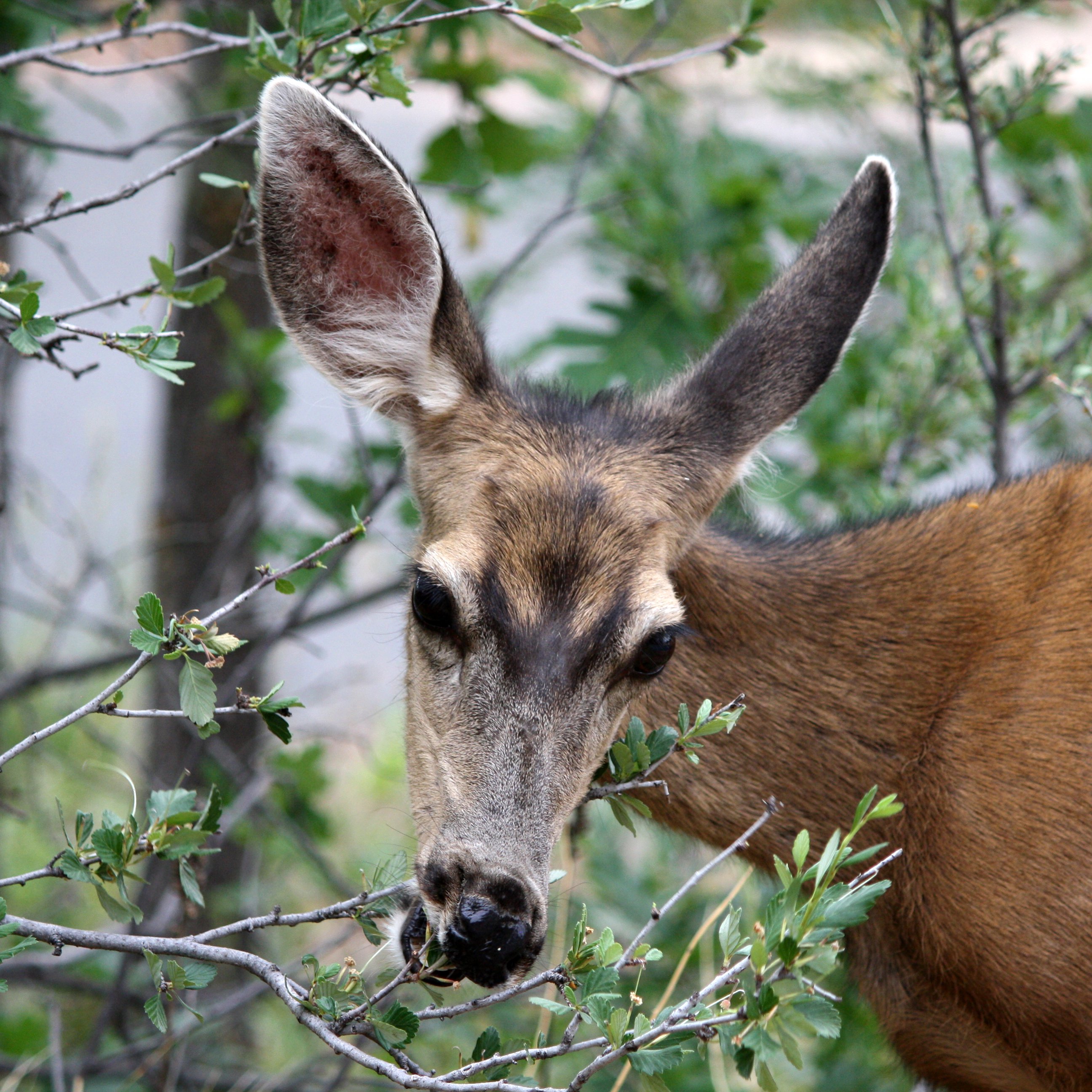

While Mule Deer scat is normally in firm pellets, I was surprised one day to find this on my walking trail. It was a very large deposit, approximately 7 inches long and 3 inches wide. The pellets are not fully formed and are clinging together. It was still warm and had a salty taste. (Just kidding—I don’t remember if it was warm or not. And yes, this is a shout out to a similar line in one of Pat McManus’ funny outdoor adventure books. I don’t remember which one.) A friend who lives nearby had reported noticing similar scat in his yard from time to time. At first glance, one suspects bear scat.
REPTILES
Bullsnake

Read my story here about meeting this large bullsnake.
TREES
Black Locust Tree



White Ash Trees




